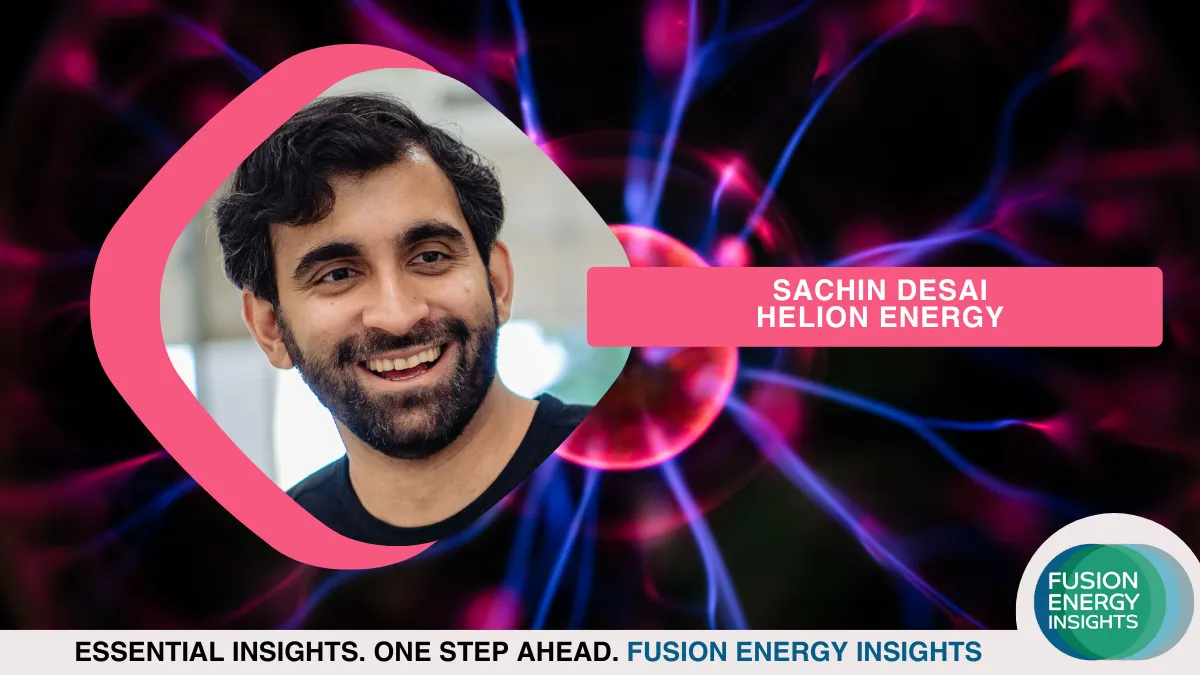Fusion Regulation: What Investors Need to Know with Sachin Desai, Helion Energy
In our podcast series, The Fusion Frontier: Investing in Tomorrow’s Energy, released at the end of last year, we spoke to experts in fusion energy and investment to dig deeper into the potential of fusion as a clean energy source, why investors invest in fusion, and some of the risks and opportunities along the way.
In Episode 7, we spoke to Sachin Desai, General Counsel at Helion Energy, to understand the regulatory framework which is crucial for investors in fusion technology.

Here are 3 key insights from the conversation.
1. Investors need to know what type of regulatory framework prevails but they don’t need to know the specifics
Recent regulatory developments in the UK and USA mean that a specific fusion energy regulatory regime is emerging where rules and guidance for licensing are specifically set for fusion energy systems, rather than aggregating fusion with other energy technologies, like fission. This signals an approach which views fusion as fundamentally different from fission and other energy technologies, but this is not the regulatory approach in all countries, although it may change over time.
Investors wanting to invest in fusion need to know the type of regulatory framework operating where they make their investment, they need to ask ‘is fusion regulated like fission and what are the industrial facility regulatory frameworks like?’
The regulatory environment for fusion can affect the return on investment, for example if the regulations around fusion licensing are complex and licensing could take several years, this will affect how much of the grid will be composed of fusion power.
Sachin says: “Because fusion devices are mass manufacturable on the orders of weeks and, therefore, if you can get a license for an upfront design that essentially allows you to build with notifications to the regulator as you proceed, then you can see true mass deployment up to its potential by the 2050s, where fusion is a major part of the electricity grid.”
2. “We're still at the cutting edge of developing the regulatory paradigm for fusion”
In the USA, fusion devices are being regulated under a by-product materials framework and regulated as an industrial facility.
In the UK, there is a similar approach to the USA in recognising the risks, so fusion will be regulated differently to fission as a distinct energy type. Regulation will continue to be overseen by the Environment Agency and the Health and Safety Executive.
France regulates ITER as a new nuclear installation and nuclear fission reactor.
The IAEA is actively looking at the regulatory regime for fusion globally and starting to convene many discussions on this topic.
Sachin argues that fusion does not have to be regulated exactly the same everywhere, but there does need to be some harmonisation in the overall framework of whether fusion is regulated as different from fission and that the regulation is applicable from pilot plants to mass deployment. As Sachin says: “Regulatory frameworks are multi-decadal endeavors in terms of stretching to mass deployment.”
3. Effective licensing through a regulatory framework is important for ensuring that fusion can be mass manufactured, but other systems have to align too
Mass deployment of fusion, a clean energy source, is vital for tackling climate change and this will require the mass manufacturing of fusion devices and a common regulatory framework and licensing regime which allows easy rollout. Sachin views licensing fusion devices like licensing aeroplanes – we need to be in a situation where an aeroplane made and licensed anywhere can land anywhere else in the world.
Sachin notes that a regulatory framework which supports the fusion industry is needed, but it has to line-up with developments in other systems too. For example, there has to be working fusion technology able to mass deployed, there needs to be public acceptance of fusion energy systems being rolled out, and there has to be the manufacturing capacity and capability to scale the technology.
And finally...
Sachin says: “If we have the ability to have mass manufactured fusion power, we really will be able to deploy it at a scale where the regulatory framework and regulatory harmonisation globally will start to be a really important question. And it's a hard question because the world's never had to deal with mass manufactured power at this scale and so it's something we have to start thinking about now.”
